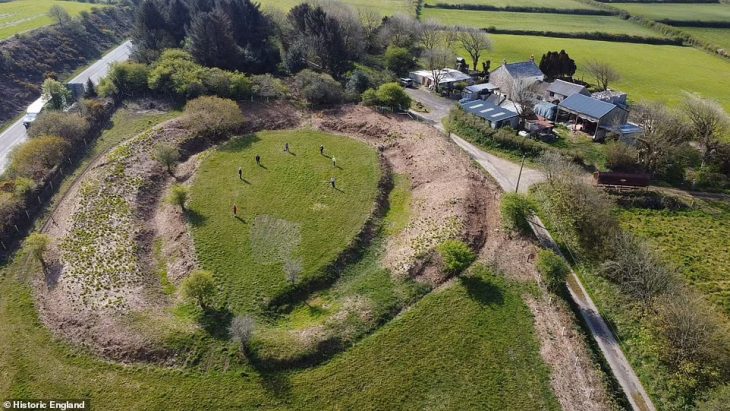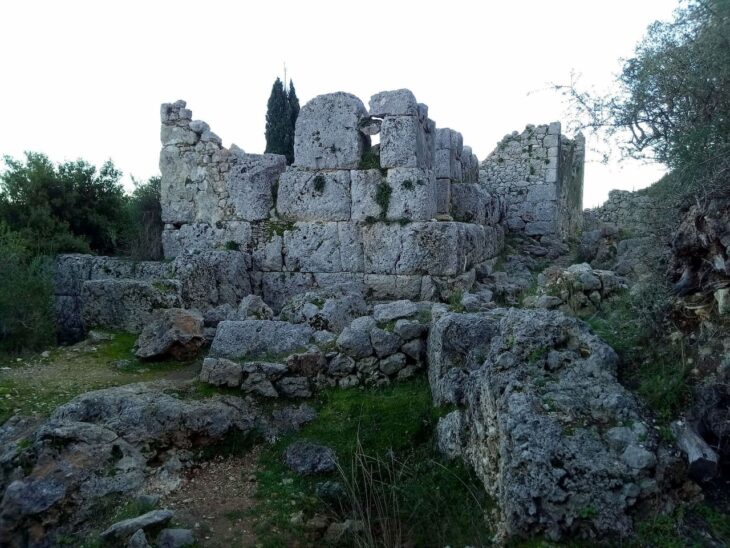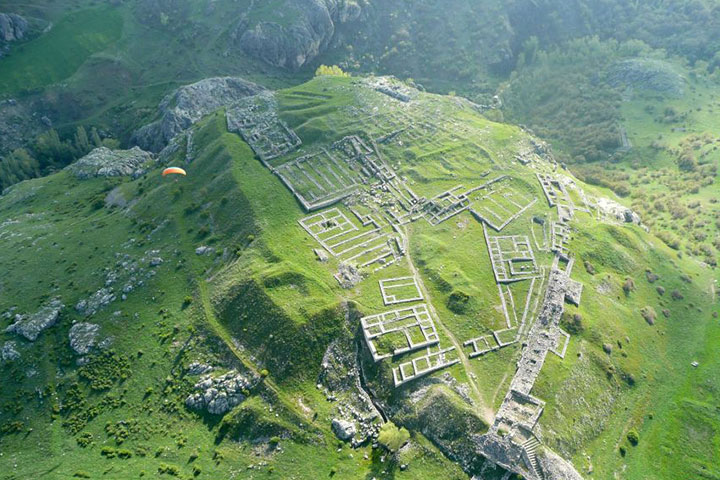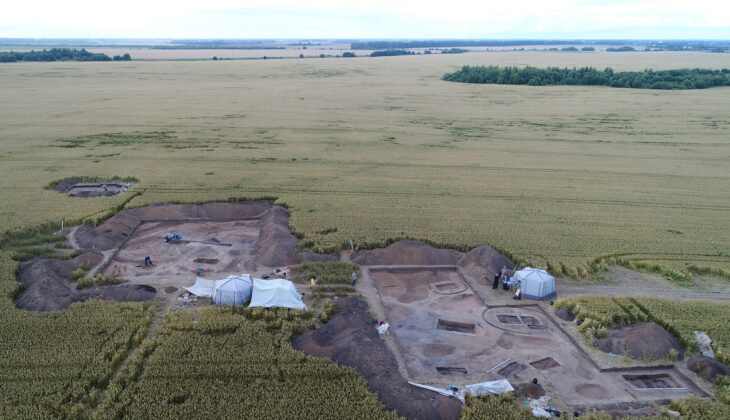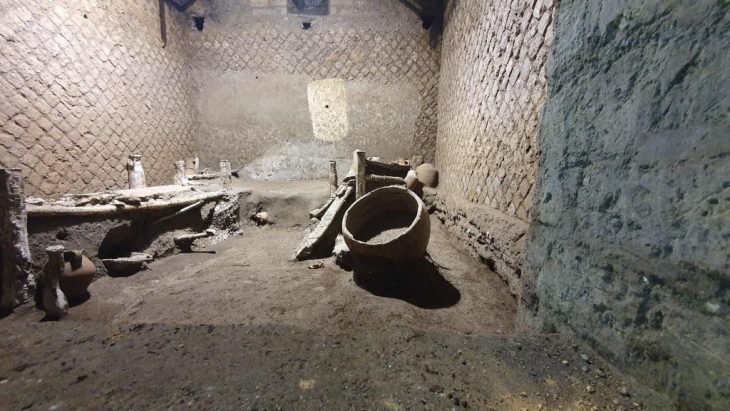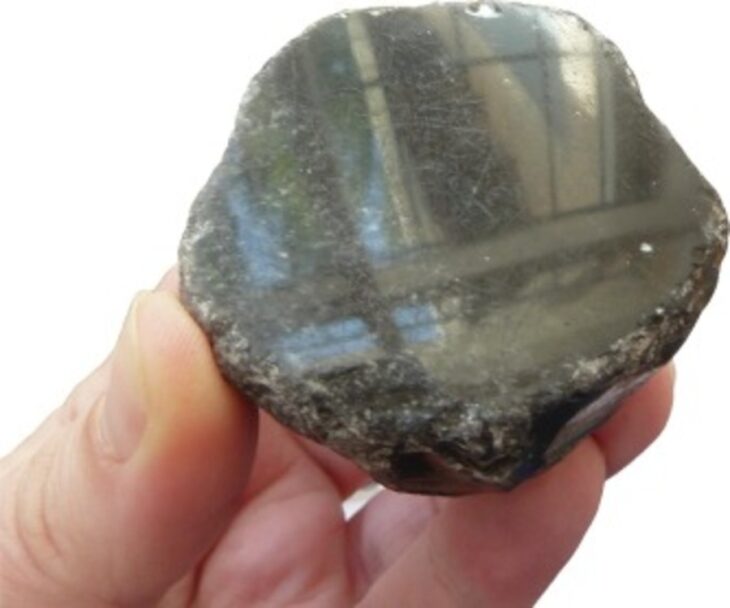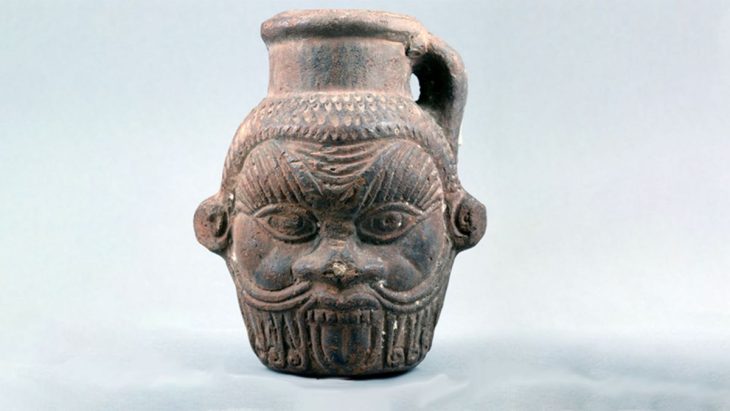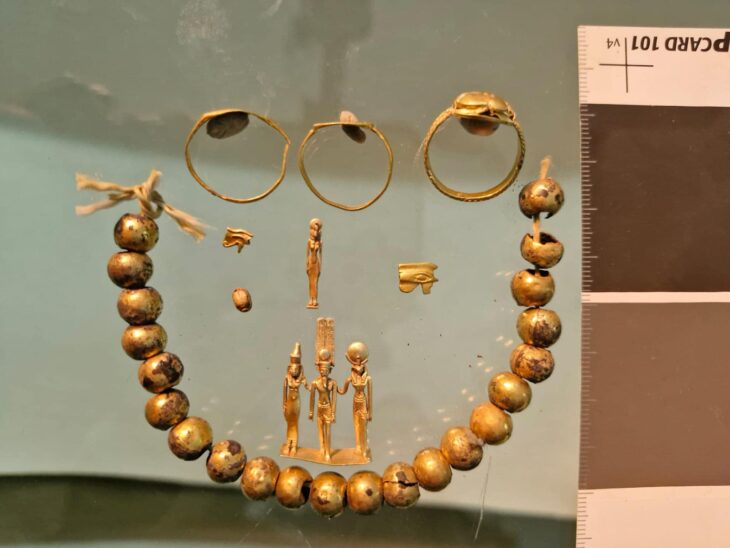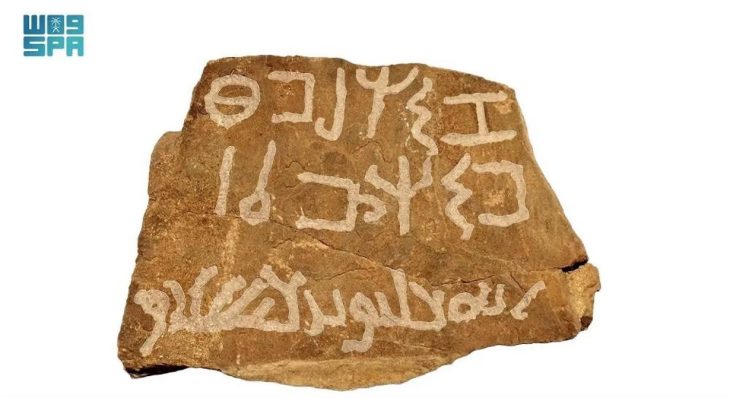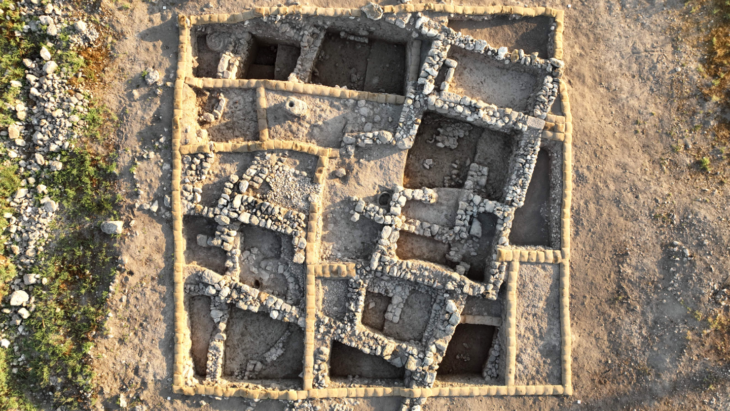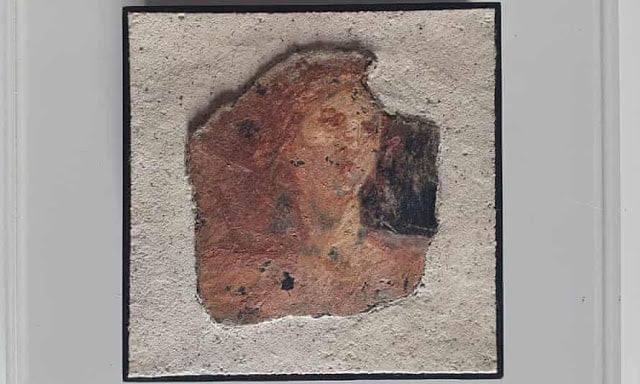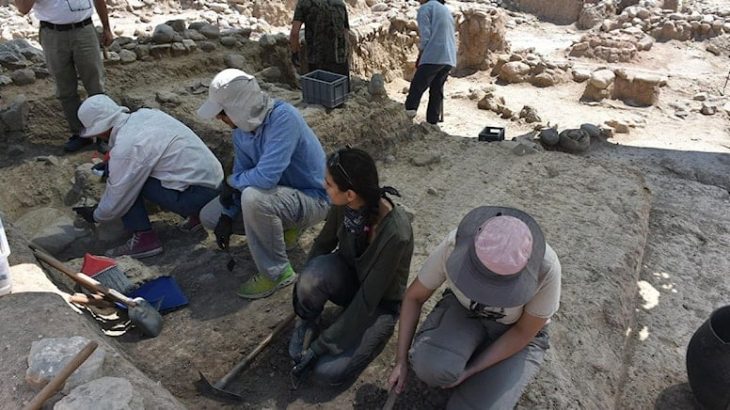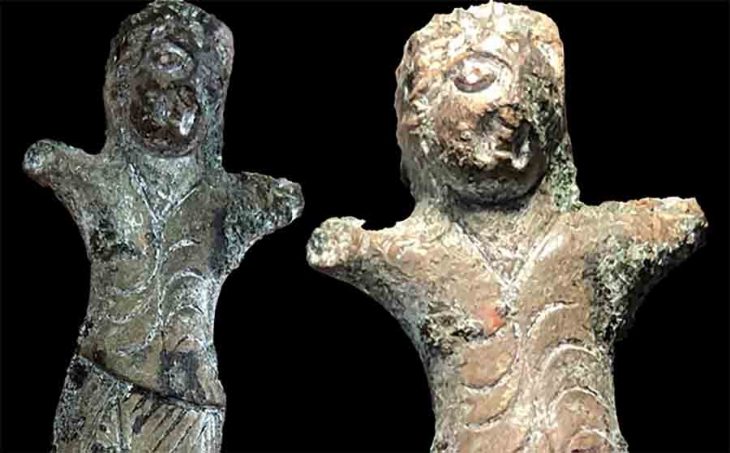Archaeologists from the State Office for Monument Preservation and Archaeology (LDA) of Saxony-Anhalt have uncovered a wealth of medieval treasures, including a Slavic settlement and burial ground near the town of Wettin-Löbejün, Germany. The finds come during preparatory work for a major powerline.
The State Office for Heritage Management and Archaeology Saxony-Anhalt announced the finds during research along the SuedOstLink direct current powerlinem a 170-kilometer project.
Dating to the 10th and 11th centuries, the site includes a craft district with evidence of iron ore extraction and smelting, and finds indicating textile production. The settlement, which was originally fortified with a large ditch, later evolved into individual farmsteads with smaller surrounding ditches. The special finds from the settlement area include a bead from a farmstead ditch and a bronze bracelet from the larger, earlier ditch.
The burial ground belonging to the settlement was completely excavated. “On this small cemetery, measuring just 5 by 30 meters, there are 60 burials in two parallel rows, closely packed together. The dead were buried according to the Christian rite lying on their backs, facing east and without any grave goods except for items belonging to garments, such as bronze rings and beads. The north-south oriented deceased were buried on their backs, facing east, in accordance with Christian ritual,” said project leader and archaeologist Susanne Friederich at the excavation site.
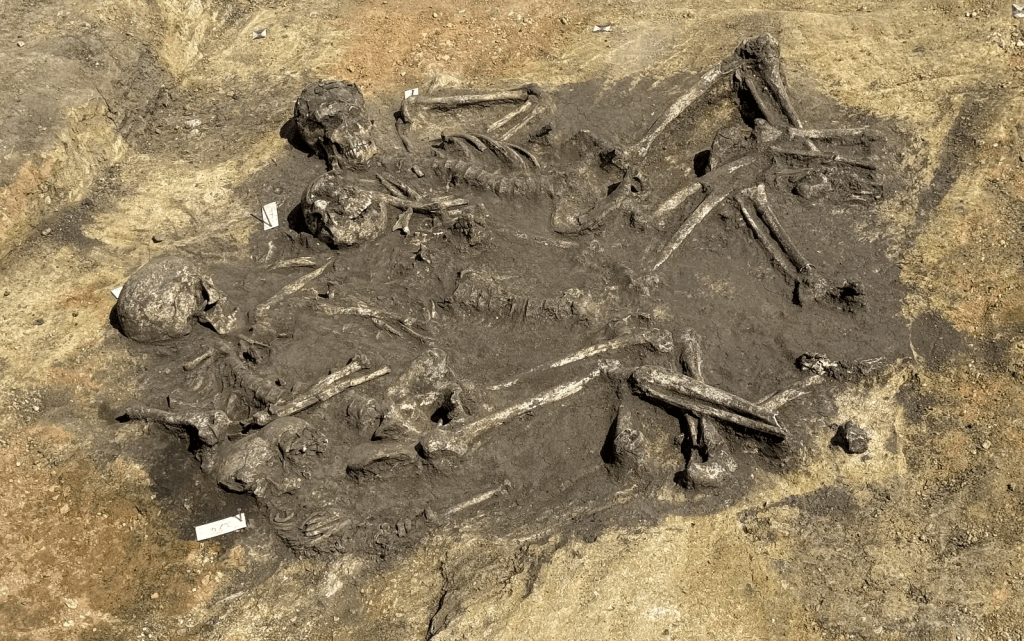
The graves mostly have head niches. In some cases there were also stones put around the head or legs. New burials were frequently placed in existing grave pits, with the remains of previous burials being moved aside or included in the refilling. The graves mostly date to the 10th-11th century AD, some may be a bit earlier.
📣 Our WhatsApp channel is now LIVE! Stay up-to-date with the latest news and updates, just click here to follow us on WhatsApp and never miss a thing!!
Among the burials in the cemetery, two findings stand out. A square pit turned out to be a ‘family grave’ of two adults and two children. Traces of wooden corner posts and beams hint at a complex grave architecture. Also unusual is the burial of a child who probably suffered from hydrocephalus, a disease that leads to excessive amounts of cerebrospinal fluid accumulating inside the skull. This can lead to increased intracranial pressure, which also affects the brain.
In fetuses and infants whose skull bones are not yet solid, the pressure is equalized by balloon-like skull expansion. Due to the high intracranial pressure, a ‘hydrocephalus’ can lead to various problems. Patients often require care and only have a short life expectancy if medical treatment is not provided. In the case of the child from Wettin-Löbejün, the special concern of the community is evidenced by beads placed in the chest area.
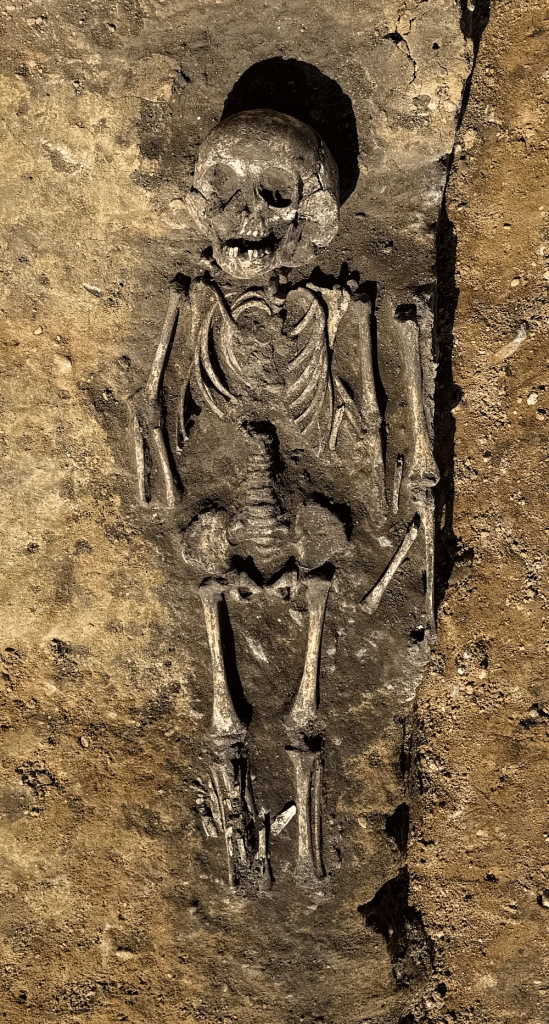
The archaeological documentation work in the area of Wettin-Löbejün will be completed by the end of August 2024.
State Office for Monument Preservation and Archaeology (LDA)
Cover Image: The archaeological site at Wettin-Löbejün. Photo: Oliver Dietrich / State Office for Heritage Management and Archaeology Saxony-Anhalt

